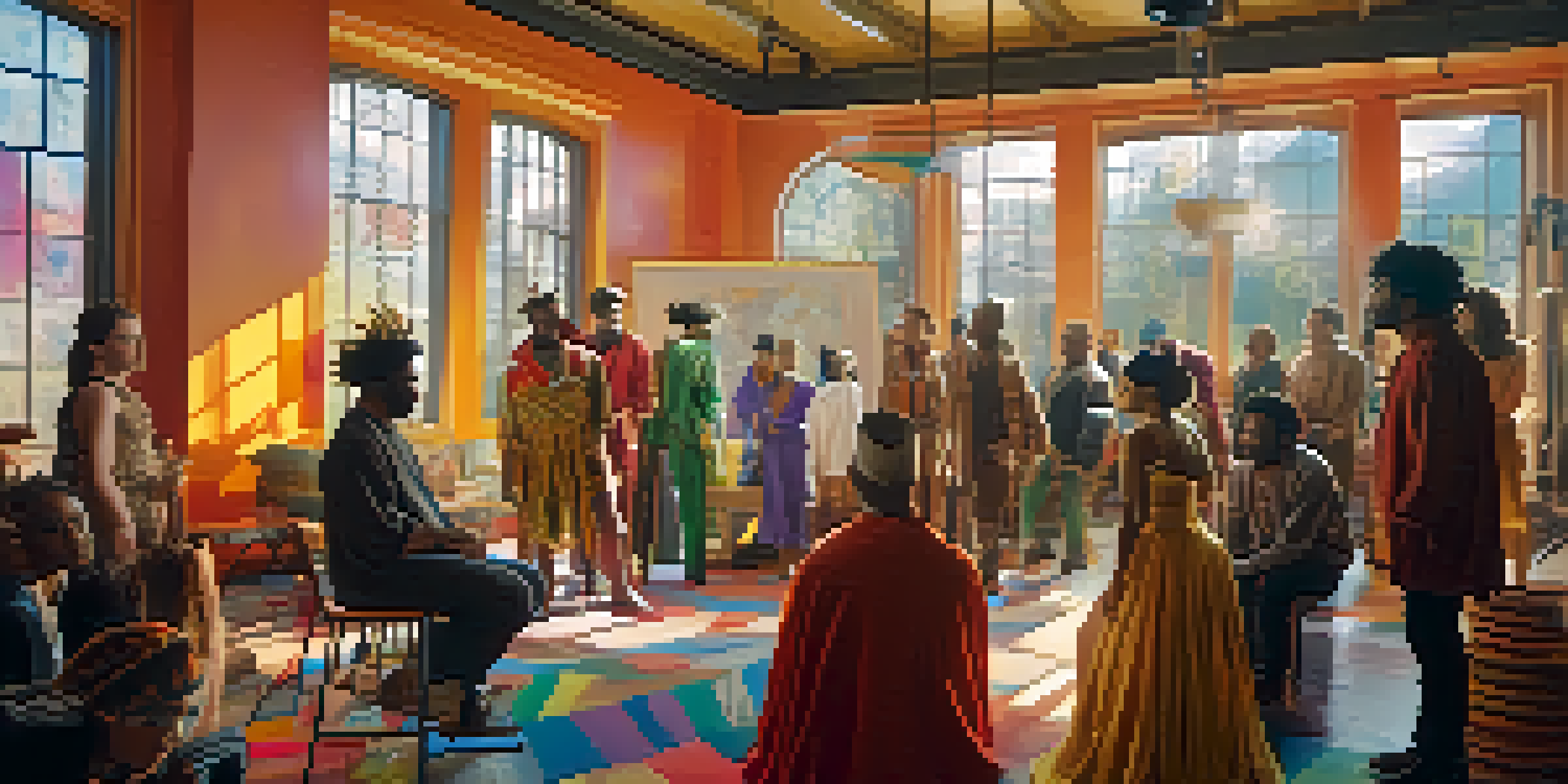Inclusion Riders: A Step Toward Ethical Filmmaking Practices

What is an Inclusion Rider in Filmmaking?
An inclusion rider is a contractual clause that mandates diversity among the cast and crew of a film. It empowers actors and filmmakers to advocate for a more equitable representation in the industry. This concept gained prominence when actress Frances McDormand mentioned it during her Oscar acceptance speech in 2018, sparking widespread discussion.
Diversity is not a trend, it's a necessity.
In essence, an inclusion rider allows artists to ensure that underrepresented groups—such as women, people of color, and individuals with disabilities—are included in key roles. By shining a spotlight on this practice, the industry is encouraged to rethink traditional hiring and casting decisions. It's a proactive step towards dismantling the systemic barriers that have long existed in Hollywood.
Moreover, inclusion riders are not just about meeting quotas; they are about enriching storytelling. Diverse perspectives can lead to more authentic narratives, ultimately benefiting audiences and the industry alike. So, when filmmakers embrace inclusion riders, they’re not just checking a box—they're enhancing the creative process.
The Impact of Inclusion Riders on Diversity
Inclusion riders can significantly impact the representation of marginalized communities in film. By establishing diversity as a contractual obligation, they compel studios to consider a wider range of talent. This shift can lead to a richer array of stories and characters that resonate with diverse audiences.

When more diverse individuals are involved in filmmaking, it opens the door for unique narratives and perspectives that might have been overlooked. This can help combat stereotypes and foster a greater understanding of different cultures. As a result, films can become more relatable and meaningful to a broader audience.
Inclusion Riders Promote Diversity
Inclusion riders mandate diversity among cast and crew, encouraging a more equitable representation in filmmaking.
The presence of inclusion riders also sends a strong message to the industry: diversity is not just a trend, but a necessity. When studios prioritize inclusivity, they pave the way for future generations of filmmakers and storytellers. This shift is crucial for creating a sustainable and equitable film industry.
Challenges in Implementing Inclusion Riders
While inclusion riders are a step forward, there are challenges in their implementation. Some filmmakers may resist the idea, viewing it as an infringement on creative freedom. Additionally, the lack of clear guidelines on how to measure diversity can lead to confusion and inconsistencies.
The stories we tell matter, and who gets to tell those stories matters even more.
Moreover, some projects may struggle to meet the diversity requirements due to limited access to talent. This can be particularly true for smaller productions or independent films that operate on tight budgets. However, these challenges can prompt discussions about resource allocation and access to underrepresented talent pools.
Despite these hurdles, the dialogue surrounding inclusion riders is essential. By addressing these challenges head-on, the industry can work towards refining the approach to ensure that diversity is genuinely integrated into the filmmaking process. This ongoing conversation is crucial for fostering an inclusive environment in the film industry.
Examples of Successful Inclusion Riders
Several films have successfully implemented inclusion riders, showcasing their potential to create diverse environments. For instance, the production of 'The Black Panther' made headlines for its commitment to diversity, both on-screen and behind the scenes. This film not only featured a predominantly Black cast but also prioritized hiring diverse crew members.
Another notable example is the film 'Brooklyn,' which employed an inclusion rider to ensure a diverse casting process. This resulted in a rich tapestry of characters that drew from various backgrounds, contributing to the film's authenticity. Such examples demonstrate that when filmmakers commit to inclusion, the results can be both impactful and commercially successful.
Challenges in Implementation Exist
Despite their potential, inclusion riders face resistance and practical challenges in measuring diversity and accessing talent.
These success stories serve as blueprints for future projects, encouraging more filmmakers to adopt inclusion riders. By showcasing the positive outcomes of diversity in storytelling, the industry can inspire others to follow suit. As more projects embrace these practices, the landscape of film is likely to transform for the better.
The Role of Actors in Promoting Inclusion
Actors play a crucial role in advocating for inclusion riders within the film industry. By demanding these clauses in their contracts, they can influence change from the top down. This kind of advocacy not only promotes diversity but also encourages other industry professionals to follow suit.
When high-profile actors leverage their influence to push for inclusion, it sets a precedent for others in the industry. This ripple effect can lead to a broader cultural shift where diversity becomes an expectation rather than an exception. As more actors speak out and take a stand, the industry will likely respond positively.
Moreover, by participating in projects with inclusion riders, actors can showcase their commitment to ethical filmmaking practices. This not only enhances their personal brand but also aligns them with a growing movement that values diversity and representation. In this way, actors can be powerful allies in the quest for a more inclusive film industry.
Industry Responses to Inclusion Riders
The film industry has seen varied responses to the concept of inclusion riders. Some studios have embraced the idea wholeheartedly, integrating it into their hiring practices. This indicates a willingness to adapt and make meaningful changes towards diversity and inclusion.
On the other hand, there are still skeptics within the industry who question the effectiveness of inclusion riders. Some argue that true change requires more than just contractual obligations; it necessitates a cultural shift in how stories are told and who gets to tell them. These differing perspectives highlight the ongoing debate surrounding diversity in filmmaking.
Actors Drive Change with Inclusion
By advocating for inclusion riders in their contracts, actors can influence industry standards and promote ethical filmmaking practices.
Despite the mixed reactions, the conversation around inclusion riders is crucial for the industry's evolution. As more people engage in discussions about diversity, there is hope for a future where inclusivity is woven into the fabric of filmmaking. Ultimately, this dialogue can lead to lasting change that benefits filmmakers and audiences alike.
The Future of Filmmaking with Inclusion Riders
The future of filmmaking looks promising with the continued implementation of inclusion riders. As the industry becomes more aware of the importance of diversity, we can expect to see a greater variety of stories being told. This evolution will not only enrich the cinematic landscape but also reflect the world we live in.
Moreover, as more filmmakers adopt inclusion riders, they may inspire other creative industries to follow suit. This could lead to a broader cultural shift where diversity and representation are seen as essential components of any creative endeavor. In this way, inclusion riders could serve as a catalyst for change across various sectors.

Ultimately, the journey towards a more inclusive film industry is ongoing. With continued advocacy and commitment to ethical practices, filmmakers can work together to create a landscape that values diversity. As we look to the future, inclusion riders represent a significant step forward in the quest for equality in storytelling.